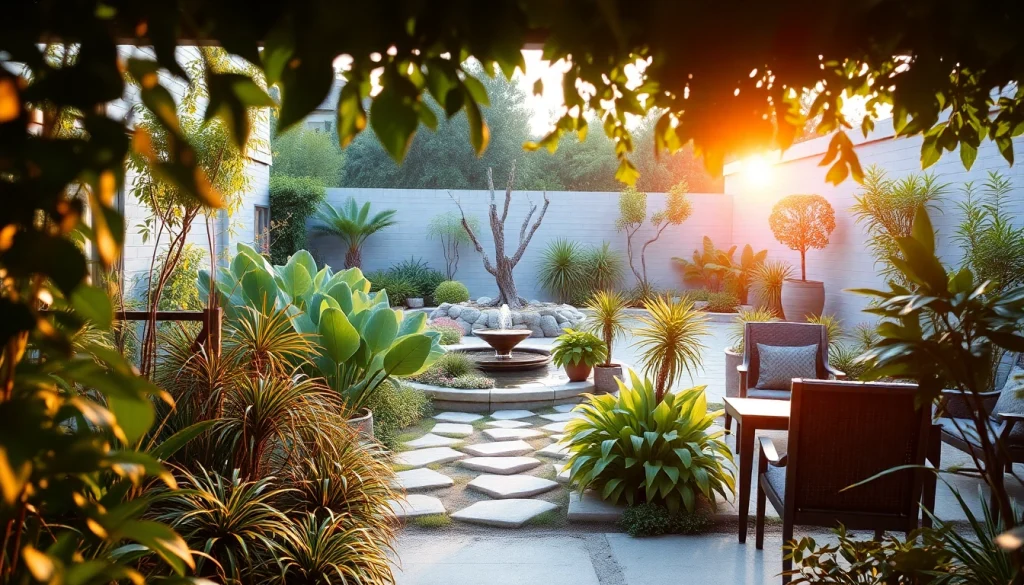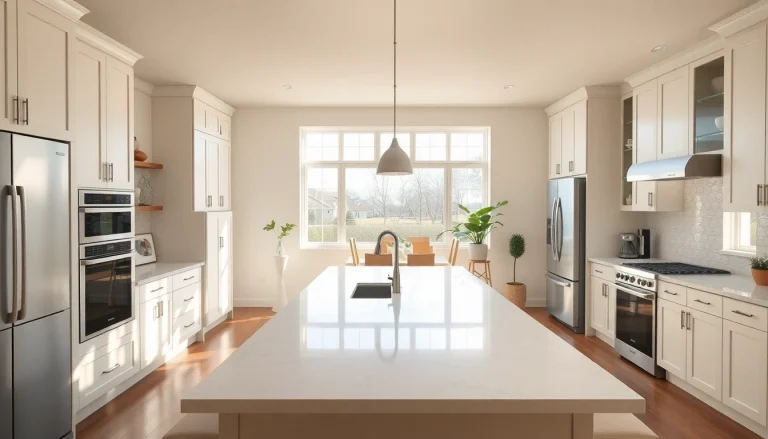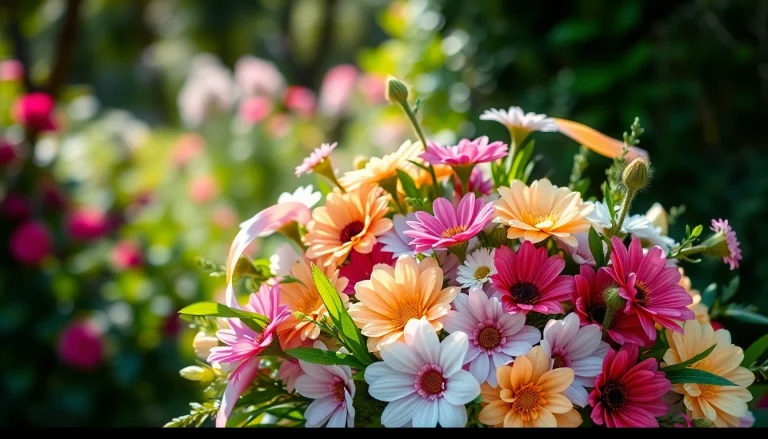
Understanding Landscape Design Services
Landscape design is a vibrant, multifaceted field that merges artistry, environmental science, and practicality to create usable outdoor spaces. Whether transforming a small backyard, enhancing commercial properties, or restoring parks, landscape design involves the careful coordination of various elements to achieve aesthetic appeal and functional viability. A professional landscape design service offers the expertise necessary to help property owners realize their outdoor vision while ensuring sustainable practices. This article delves into the intricacies of landscape design services, highlighting their importance, the elements of effective design, and the factors crucial in choosing a service provider.
What is Landscape Design?
Landscape design refers to the art and science of shaping outdoor spaces to create a harmonious environment comprising flora, hardscape, and water features. The practice emphasizes both aesthetic and functional aspects, ensuring that outdoor areas serve practical purposes while being visually appealing. Key components of landscape design include spatial layout, plant selection based on climate and soil conditions, and the integration of structures such as decks, patios, and pathways.
Importance of a Professional Landscape Design Service
Engaging a professional landscape design service is paramount for ensuring your vision translates into reality. Professional designers bring years of experience, knowledge of horticulture, and understanding of environmental principles to the table. Their expertise can elevate an ordinary outdoor space into a breathtaking oasis, improve property functionality, and contribute positively to habitat conservation. Furthermore, a well-designed landscape adds significant value to your property—studies have shown that a well-maintained landscape can increase a home’s value by up to 15%.
Elements of Effective Landscape Design
Effective landscape design incorporates several key elements ensuring the successful execution of a project. These include:
- Unity and Consistency: All elements of the landscape should work together harmoniously to create a cohesive look.
- Balance: Achieving a visual and physical balance through symmetrical or asymmetrical arrangements can create an appealing space.
- Contrast: The inclusion of contrasting colors, textures, and shapes can add visual interest and depth to the landscape.
- Scale: All design elements should be in proportion to one another and to the surrounding environment.
- Functionality: The design must consider how the space will be used, ensuring areas are practical for their intended purposes.
Factors to Consider When Choosing a Landscape Design Service
Selecting the right landscape design service is crucial for the success of your project. Here are important factors to consider:
Defining Your Space’s Needs
Before you can effectively choose a landscape design service, you must articulate your needs and goals. Consider the following:
- Functionality: What activities will your outdoor space support? Gardens for growing vegetables, play areas for children, or areas for entertaining should be planned differently.
- Aesthetic Preferences: Identify the styles, themes, and elements that appeal to you. Do you favor modern minimalism, classic landscaping, or a more rustic look?
- Sustainability: Increasingly, property owners are seeking eco-friendly designs. Consider incorporating drought-tolerant plants and materials.
Researching Background and Reviews
Once you have a clearer picture of your needs, begin researching potential service providers. Look for established firms with positive reviews and case studies demonstrating their design capabilities and client satisfaction. Online platforms, such as Angie’s List and Yelp, can be invaluable resources in assessing the reputation of landscape design services.
Budgeting for Landscape Design Services
Establishing a budget is an integral part of the planning process. Professional landscape design services can vary significantly in cost, with factors such as location, project scope, and complexity influencing pricing. On average, expect to pay between $50 to $100 per hour for a landscape designer’s services. For smaller projects, a total cost might range from $500 to $2,000, while larger, more elaborate projects can soar past $20,000. Ensure that you communicate your financial limits to the potential service provider to avoid unexpected expenses.
Common Landscape Design Service Offerings
Different landscape design services may offer a range of options to meet diverse client needs. Here is an overview of the most common offerings:
Residential vs. Commercial Landscape Design
Landscape design typically divides into residential and commercial services, each with unique requirements and objectives. Residential landscape design focuses on enhancing personal outdoor spaces, considering factors like family activities and garden aesthetics. In contrast, commercial landscape design aims to create functional outdoor environments for businesses, including storefronts, parks, and corporate complexes. Effective designs in both areas can greatly enhance overall property values and curb appeal.
Consultation and Planning Phases
Landscape design projects usually begin with an initial consultation, allowing designers to understand client needs and preferences. During planning, designers lay out proposals, provide rough sketches, or offer digital renderings to visualize the ultimate look of the project. This phase often includes discussions around necessary permits, potential construction timelines, and sourcing materials, allowing for a seamless transition to the implementation stage.
Installation and Maintenance Services
After finalizing designs, many landscape design services will oversee installation, ensuring that all elements are executed precisely according to the plan. This can include the laying of sod, planting of trees and shrubs, installation of hardscape elements, and even irrigation system setup. Additionally, ongoing maintenance services are often available, ensuring that landscapes thrive and remain outwardly pleasing over time. Maintenance might encompass lawn care, seasonal plant upkeep, seasonal cleanup, and more.
Challenges in Landscape Design
Even with expertise, various challenges can arise during the landscape design process. Some common issues include:
Dealing with Site Limitations
Each site comes with its own set of challenges, from poor soil conditions to space constraints. Landscape designers must assess these challenges and develop creative solutions to maximize the usability and aesthetic appeal of the area. Techniques such as raised beds for gardens or implementing terracing in sloped areas can help overcome these site limitations.
Environmental Considerations
Designers must consider ecological impacts and sustainability. This includes selecting native plants that require less water, planning for efficient drainage, and preserving existing natural features where possible. Incorporating environmentally friendly practices not only protects surrounding ecosystems but also enhances the overall aesthetic and sustainability of the landscape.
Managing Customer Expectations
Effective communication is vital in judging client expectations against realistic outcomes. Landscape designers must clearly convey what can be achieved within budget and site constraints, education, and consistent updates throughout the project. Mismanaged expectations can lead to dissatisfaction and a poor working relationship.
Evaluating and Enhancing Your Landscape Design
Once a landscape design project is completed, evaluating its effectiveness is crucial, as is planning for any necessary adjustments over time. Here’s how to do so effectively:
Post-Installation Assessment
After installation, performing a detailed assessment helps in gauging whether the landscape meets the initial objectives and functions well over time. This can include evaluating plant health, soil condition, and landscape aesthetics. An assessment may also involve gathering feedback from family or clients regarding their experiences with the newly designed space.
Adapting Designs Over Time
As seasons change and landscapes mature, designs may require updates to remain functional and beautiful. Designers should remain engaged with clients post-project completion, encouraging regular check-ins to discuss any adjustments or enhancements that might be necessary to adapt to changing preferences or needs.
Incorporating Feedback for Continuous Improvement
Collecting feedback from users of the landscape is invaluable for identifying both the strengths and weaknesses present in the design. This feedback can guide future projects or adjustments, leading to continually improving the landscape. Designers should ask for clients’ input regularly to ensure satisfaction.






